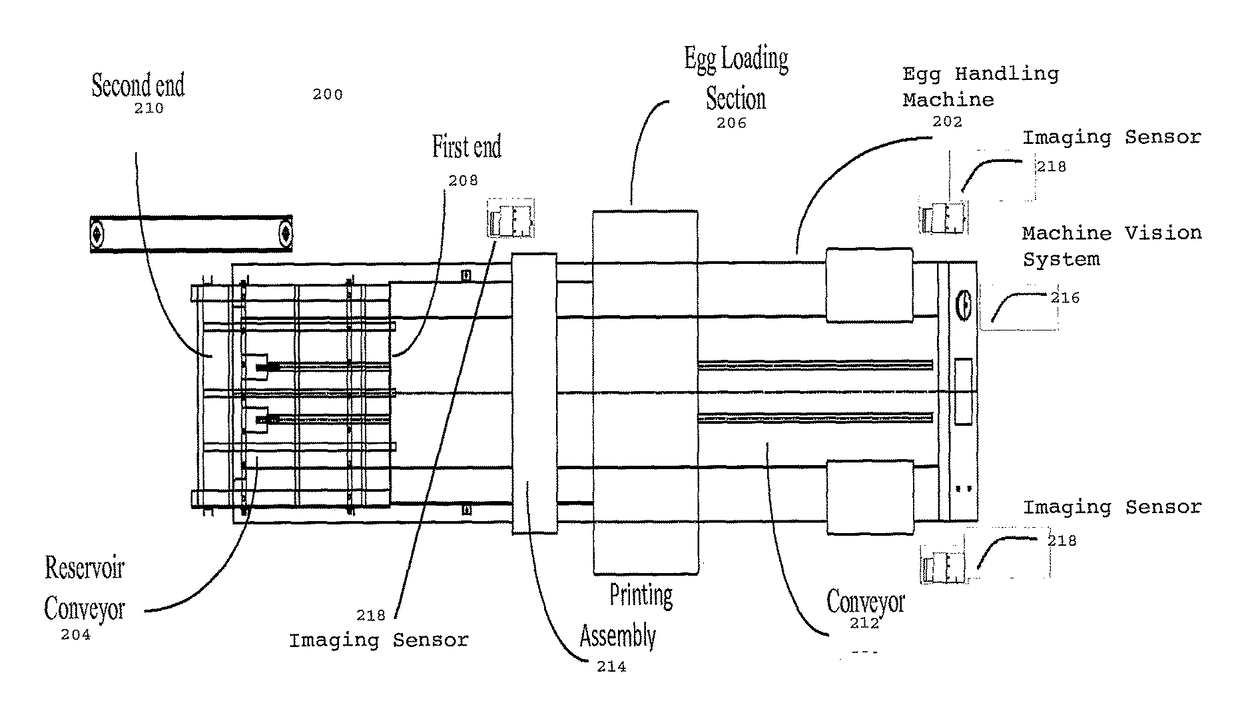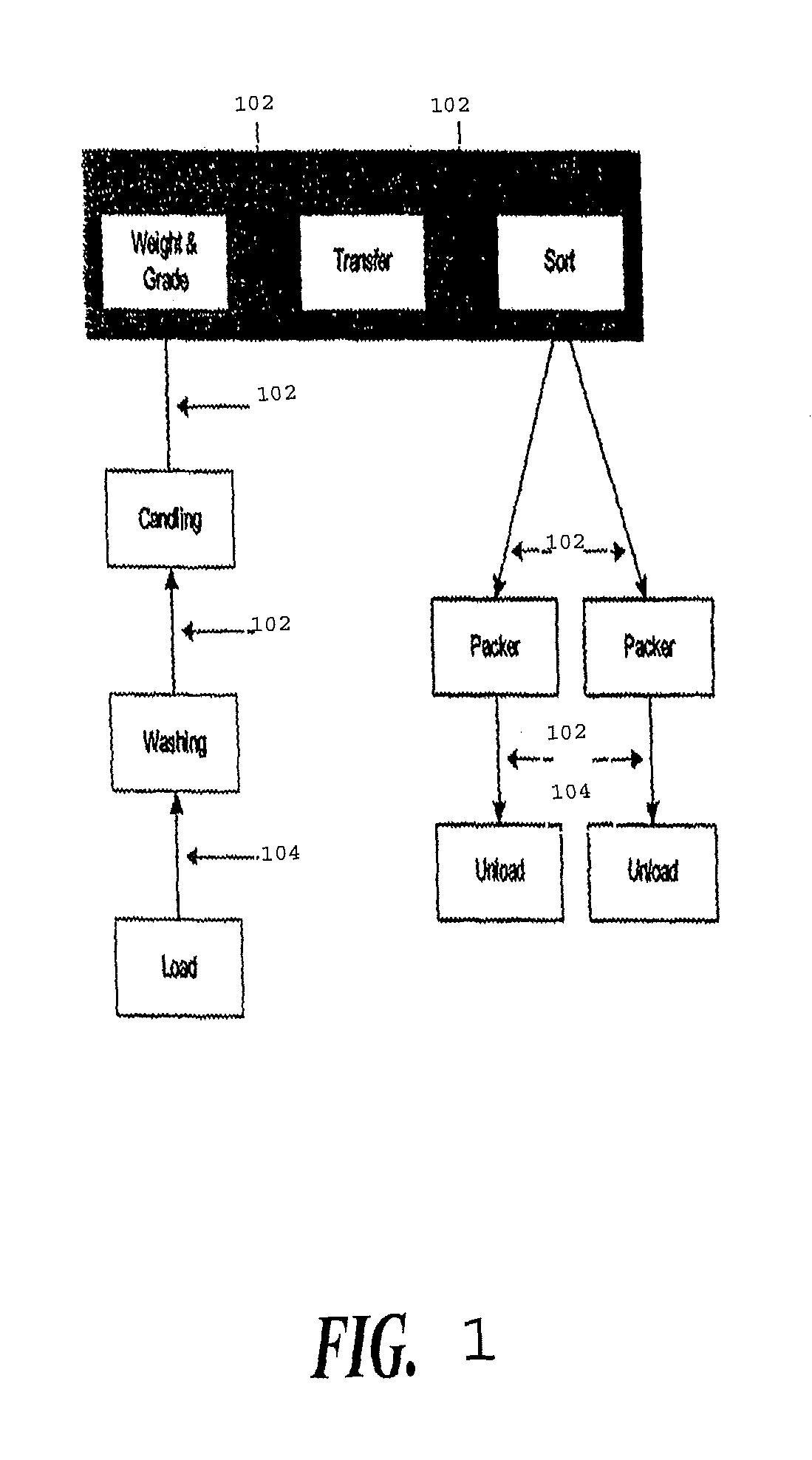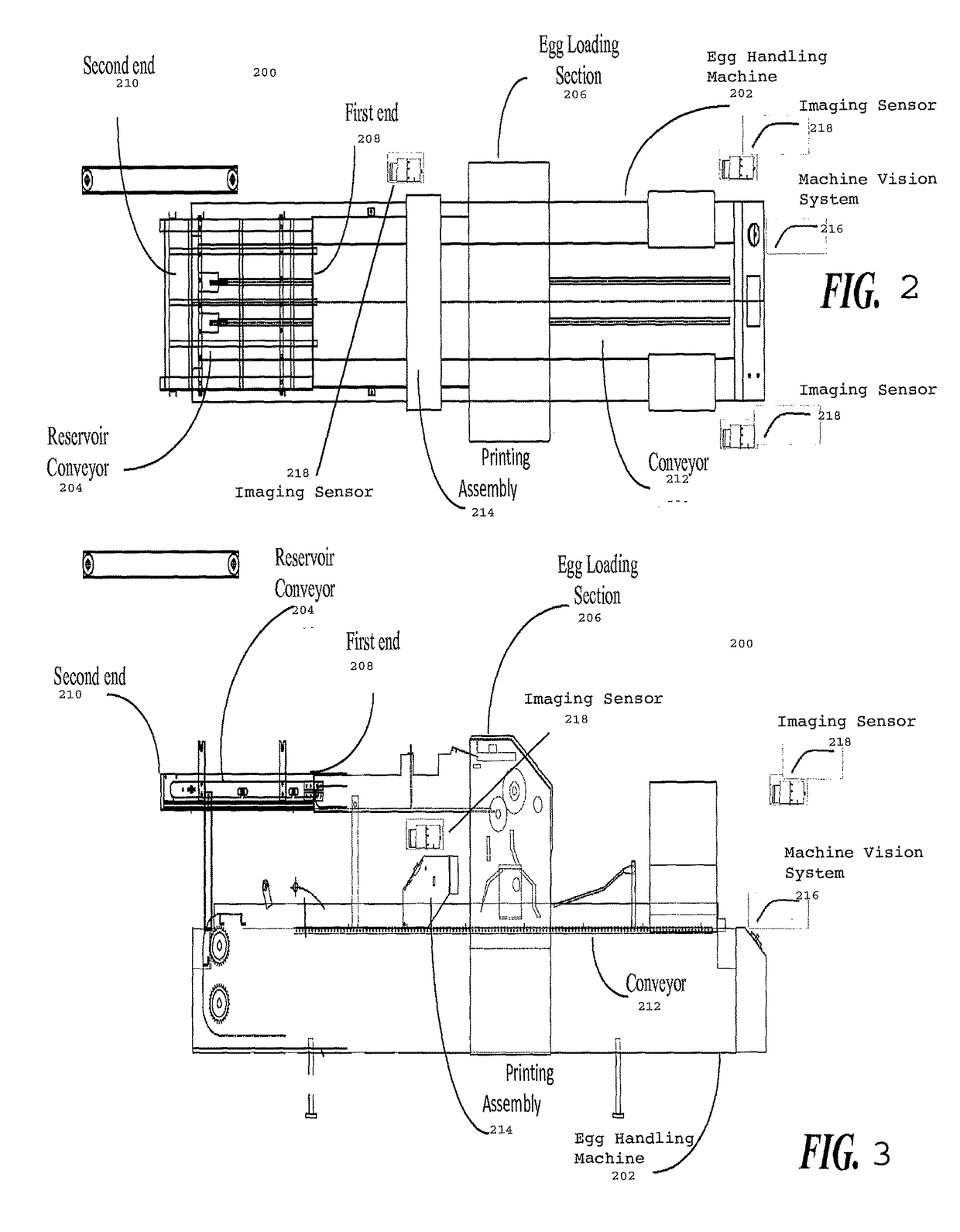Method and system for applying ink markings on food products
a technology for food products and inks, applied in the field of food product processing, can solve the problems of affecting the quality of printed materials, affecting the equipment, and consumers of eggs negatively, and reducing the speed of printing, so as to reduce the quality of printing, the effect of reducing the number of restrictions on the amount of data printed
- Summary
- Abstract
- Description
- Claims
- Application Information
AI Technical Summary
Benefits of technology
Problems solved by technology
Method used
Image
Examples
Embodiment Construction
[0035]This description provides examples not intended to limit the scope of the appended claims. The figures generally indicate the features of the examples, where it is understood and appreciated that like reference numerals are used to refer to like elements. Reference in the specification to “one embodiment” or “an embodiment” or “an example embodiment” means that a particular feature, structure, or characteristic described is included in at least one embodiment described herein and does not imply that the feature, structure, or characteristic is present in all embodiments described herein.
[0036]In general, the embodiments herein provide methods and systems for marking information and other relevant data on food products and associated packaging. Embodiments of the present disclosure are directed to an apparatus as well as a method for marking food products as they pass through a marking station, with the marking being carried out by marking devices that are designed and configur...
PUM
 Login to View More
Login to View More Abstract
Description
Claims
Application Information
 Login to View More
Login to View More - R&D
- Intellectual Property
- Life Sciences
- Materials
- Tech Scout
- Unparalleled Data Quality
- Higher Quality Content
- 60% Fewer Hallucinations
Browse by: Latest US Patents, China's latest patents, Technical Efficacy Thesaurus, Application Domain, Technology Topic, Popular Technical Reports.
© 2025 PatSnap. All rights reserved.Legal|Privacy policy|Modern Slavery Act Transparency Statement|Sitemap|About US| Contact US: help@patsnap.com



